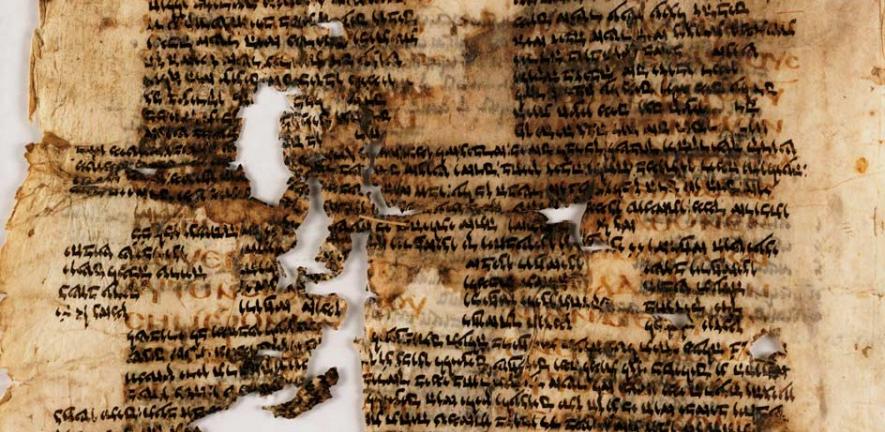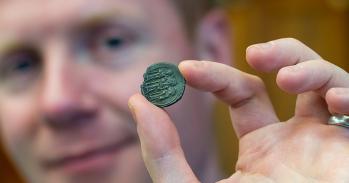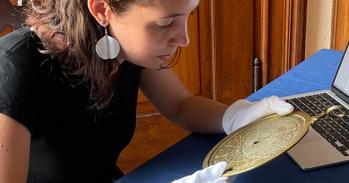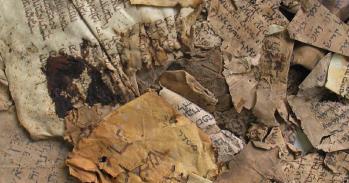
New research has uncovered a forgotten chapter in the history of the Bible, offering a rare glimpse of Byzantine Jewish life and culture.
New research has uncovered a forgotten chapter in the history of the Bible, offering a rare glimpse of Byzantine Jewish life and culture.
The translation of the Hebrew Bible into Greek between the 3rd and 1st centuries BCE is said to be one of the most lasting achievements of the Jewish civilization - without it, Christianity might not have spread as quickly and as successfully as it did.
Professor Nicholas de Lange
The study by Cambridge University researchers suggests that, contrary to long-accepted views, Jews continued to use a Greek version of the Bible in synagogues for centuries longer than previously thought. In some places, the practice continued almost until living memory.
The key to the new discovery lay in manuscripts, some of them mere fragments, discovered in an old synagogue in Egypt and brought to Cambridge at the end of the 19th century. The so-called Cairo Genizah manuscripts have been housed ever since in Cambridge University Library.
Now, a fully searchable online corpus (http://www.gbbj.org) has gathered these manuscripts together, making the texts and analysis of them available to other scholars for the first time.
"The translation of the Hebrew Bible into Greek between the 3rd and 1st centuries BCE is said to be one of the most lasting achievements of the Jewish civilization - without it, Christianity might not have spread as quickly and as successfully as it did," explained Nicholas de Lange, Professor of Hebrew and Jewish Studies in the Faculties of Divinity and Asian and Middle Eastern Studies, who led the three-year study to re-evaluate the story of the Greek Bible fragments.
"It was thought that the Jews, for some reason, gave up using Greek translations and chose to use the original Hebrew for public reading in synagogue and for private study, until modern times when pressure to use the vernacular led to its introduction in many synagogues."
Close study of the Cairo Genizah fragments by Professor de Lange led to the discovery that some contained passages from the Bible in Greek written in Hebrew letters. Others contained parts of a lost Greek translation made by a convert to Judaism named Akylas in the 2nd century CE. Remarkably, the fragments date from 1,000 years after the original translation into Greek, showing use of the Greek text was still alive in Greek-speaking synagogues in the Byzantine Empire and elsewhere.
Manuscripts in other libraries confirmed the evidence of the Cambridge fragments, and added many new details. It became clear that a variety of Greek translations were in use among Jews in the Middle Ages.
Not only does the new research offer us a rare glimpse of Byzantine Jewish life and culture, but it also illustrates the cross-fertilisation between Jewish and Christian biblical scholars in the Middle Ages. "This is a very exciting discovery for me because it confirms a hunch I had when studying Genizah fragments 30 years ago," said Professor de Lange.
The online resource enables comparison of each word of the Hebrew text, the Greek translation - knows as the Septuagint after the 70 Jewish scholars said to have translated it - and the fragments of Akylas' and other Jewish translations from antiquity.
The resource was created following collaboration between research teams at Cambridge University, including Dr Cameron Boyd-Taylor and Dr Julia Krivoruchko, and King's College London. "This ambitious piece of collaborative digital scholarship required challenging technical difficulties to be solved," explained Paul Spence, who led the team at the Centre for Computing in the Humanities at King's. "It draws together a wide variety of materials under a standards-based framework which provides multiple entry points into the material."
The research was funded by the Arts and Humanities Research Council.
Image: Genizah palimpsest with Hebrew (shown upside down) written over the top of a 6th-century copy of Akylas' Greek translation (c. 125 CE) of the Books of Kings (shown the right way up); T-S 12.184r. Taylor-Schechter Genizah Research Unit, reproduced by permission of the Syndics of Cambridge University Library.
This work is licensed under a Creative Commons Licence. If you use this content on your site please link back to this page.





